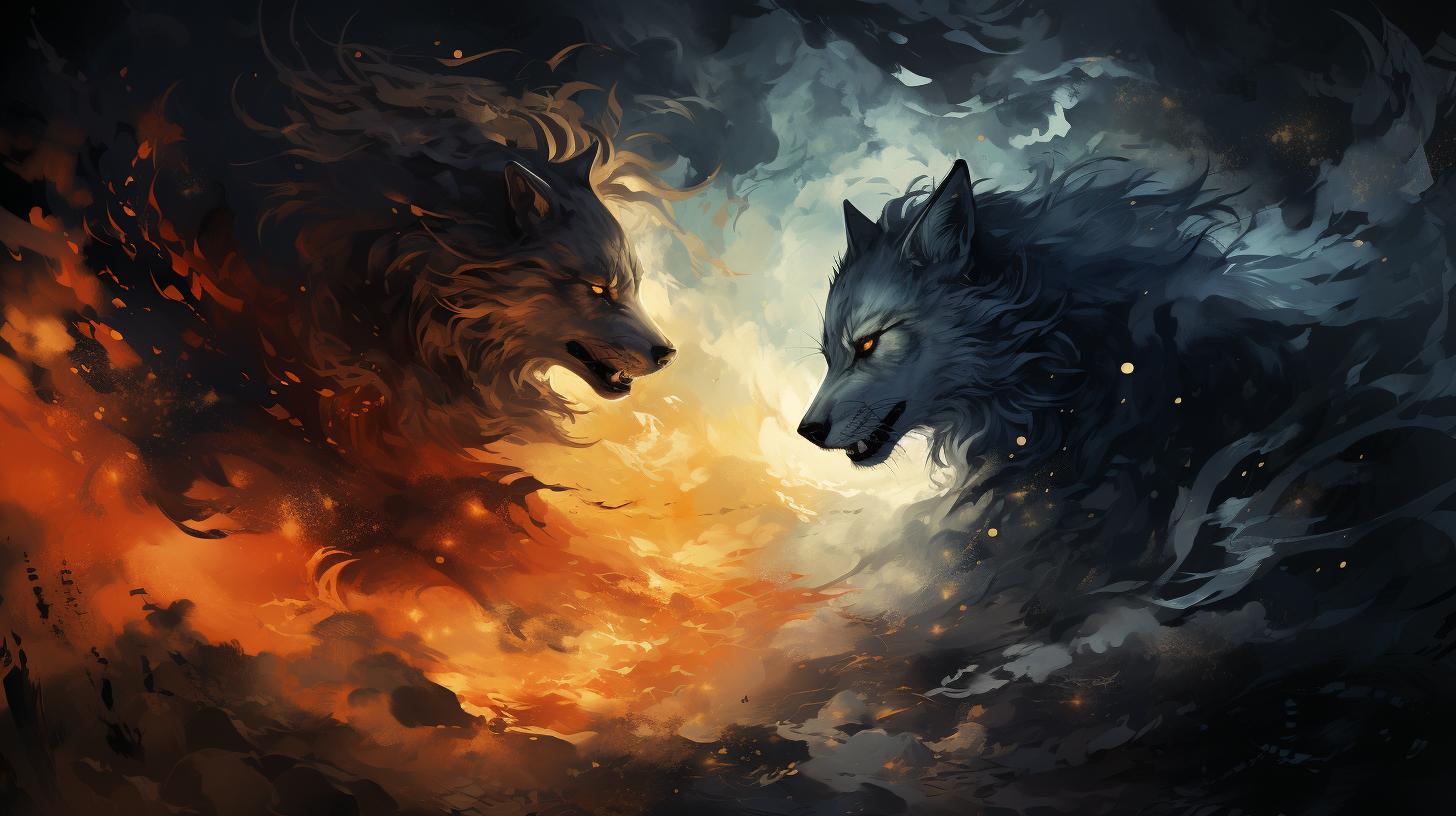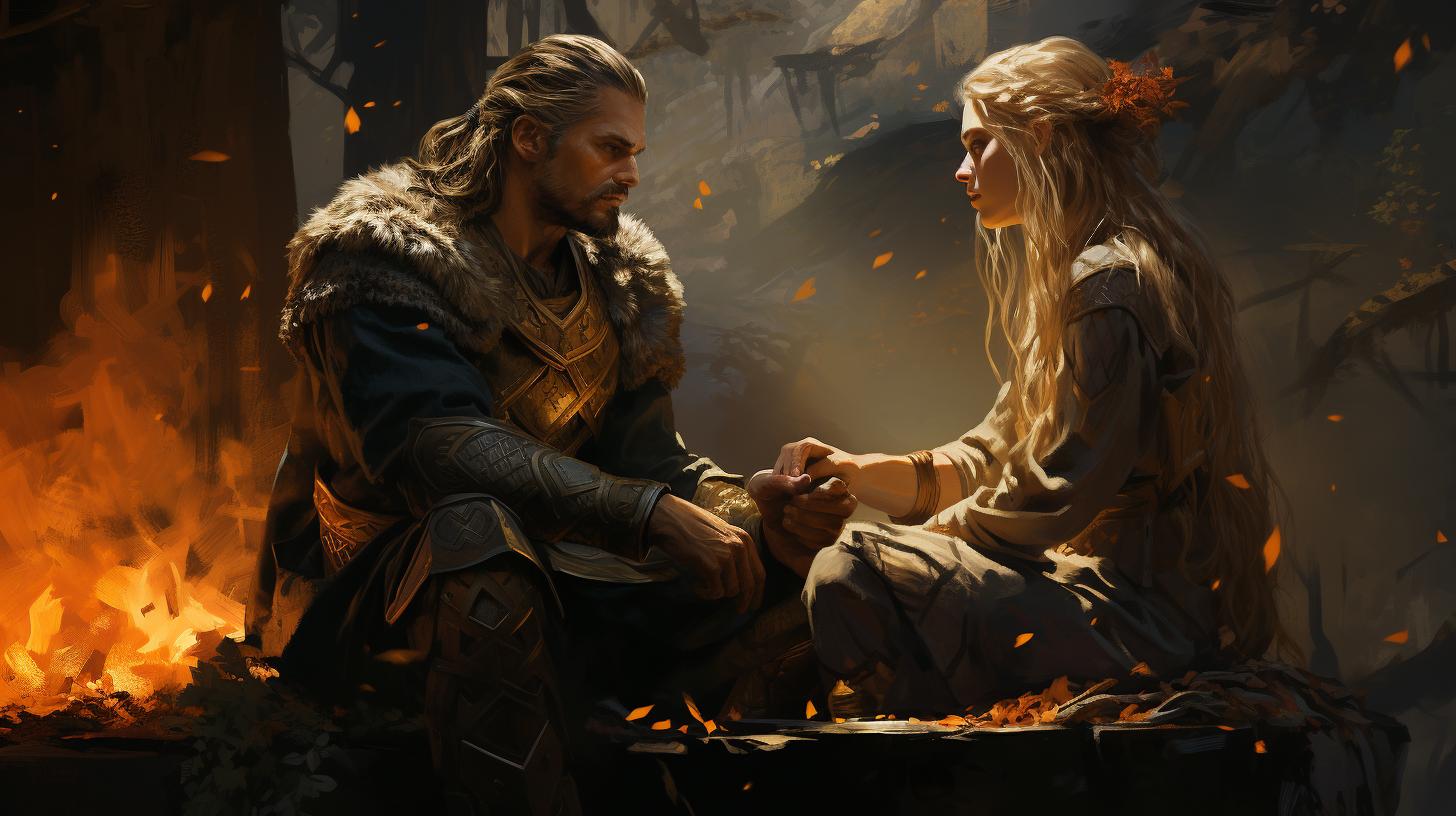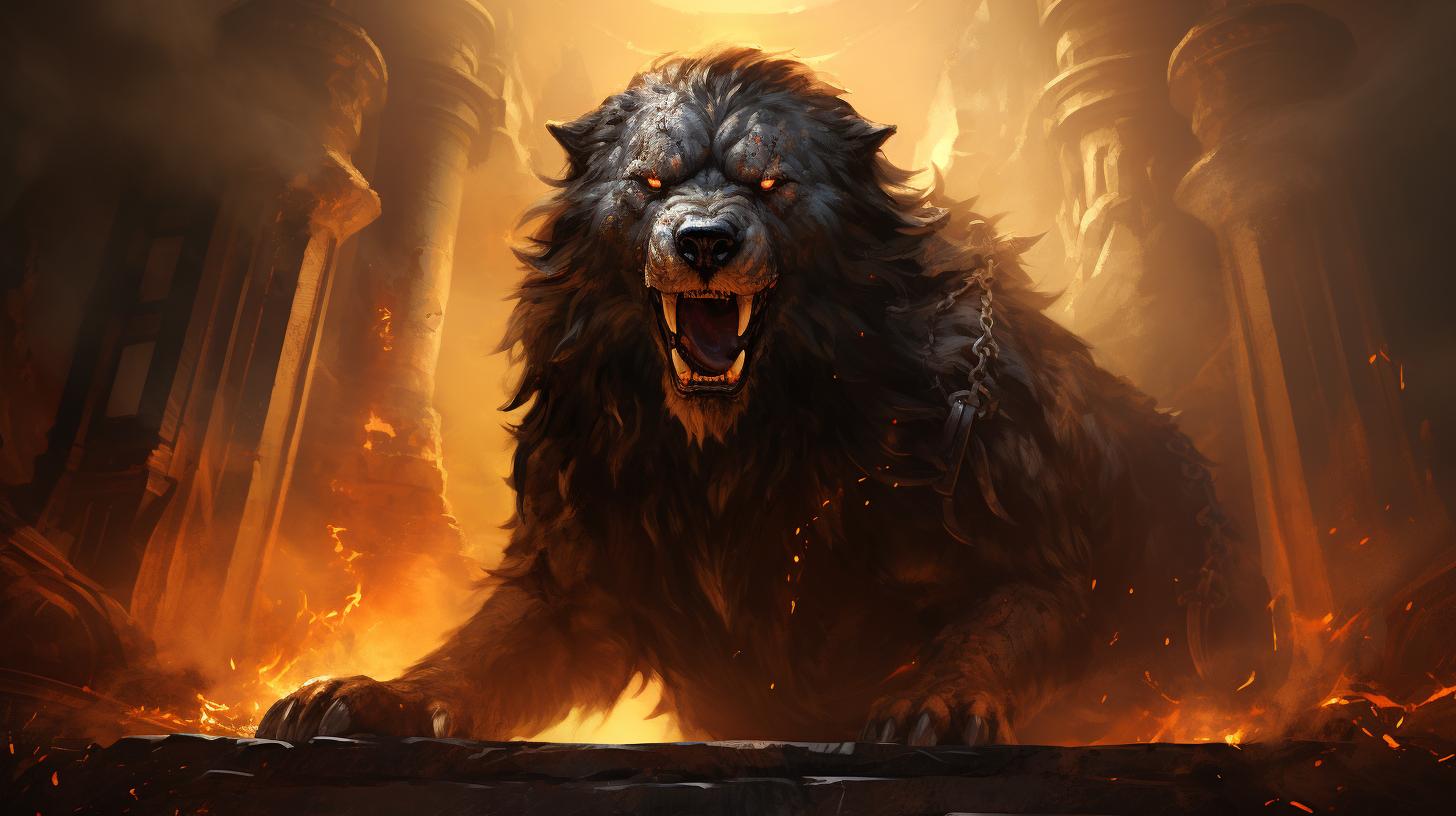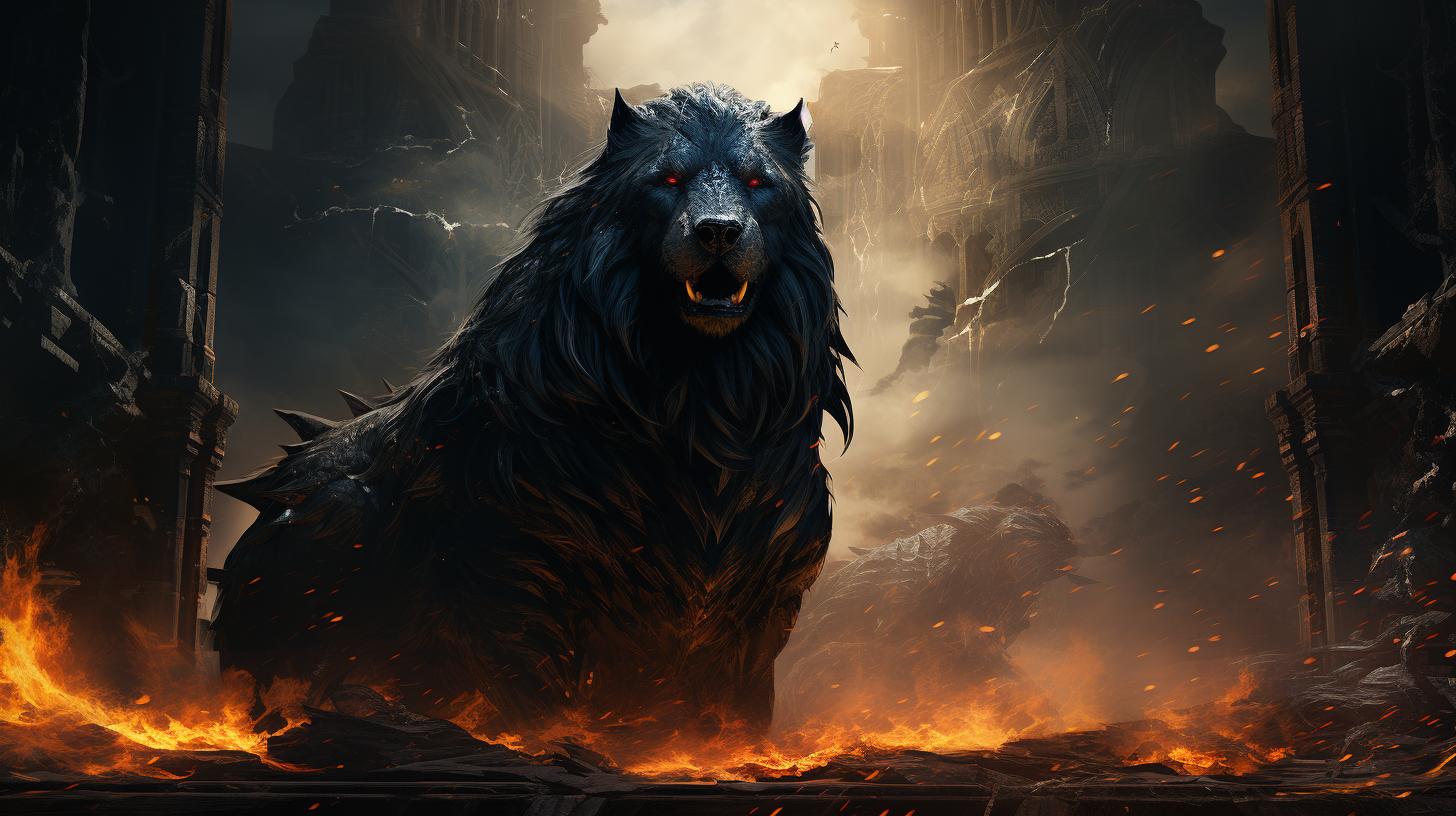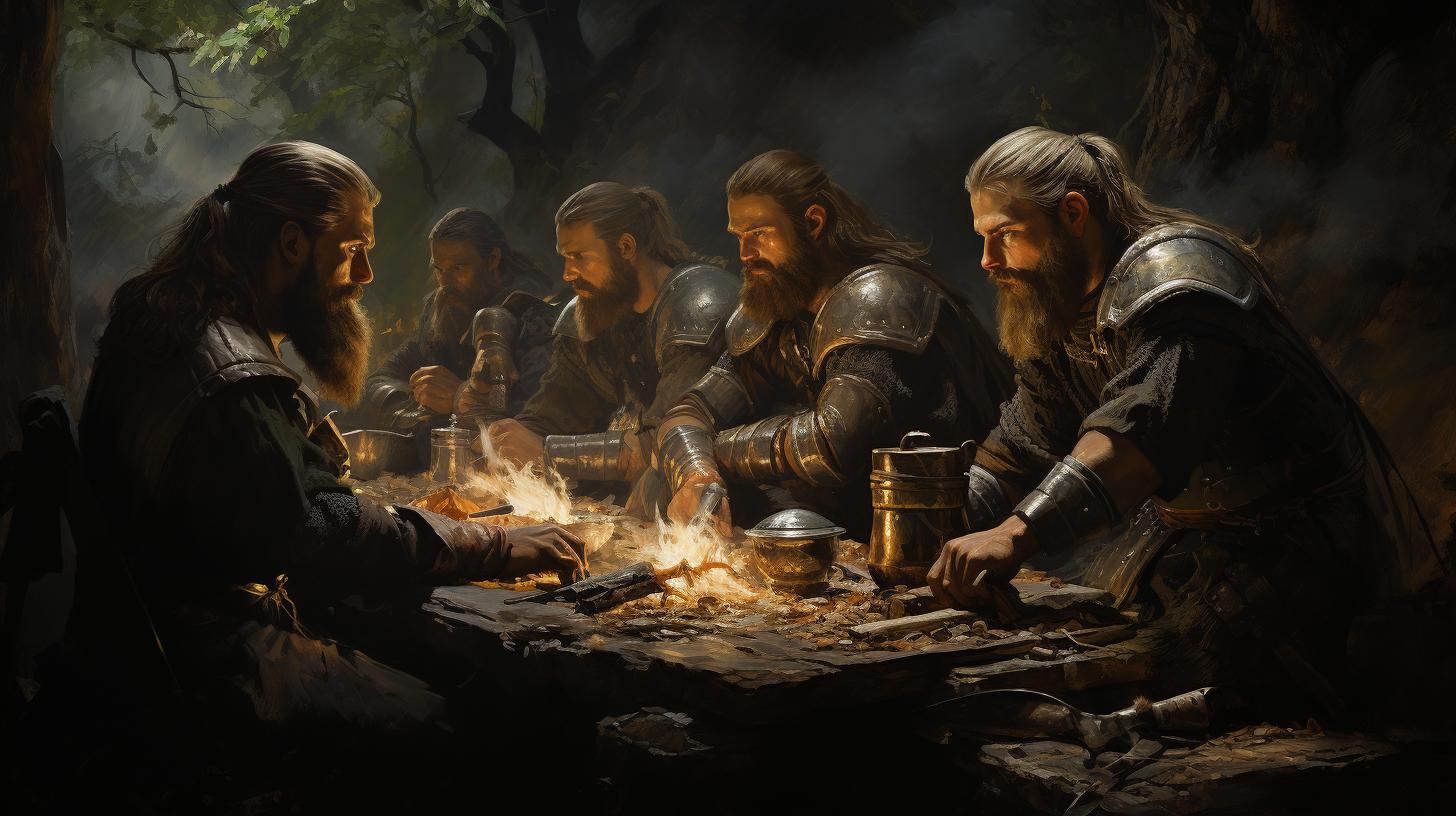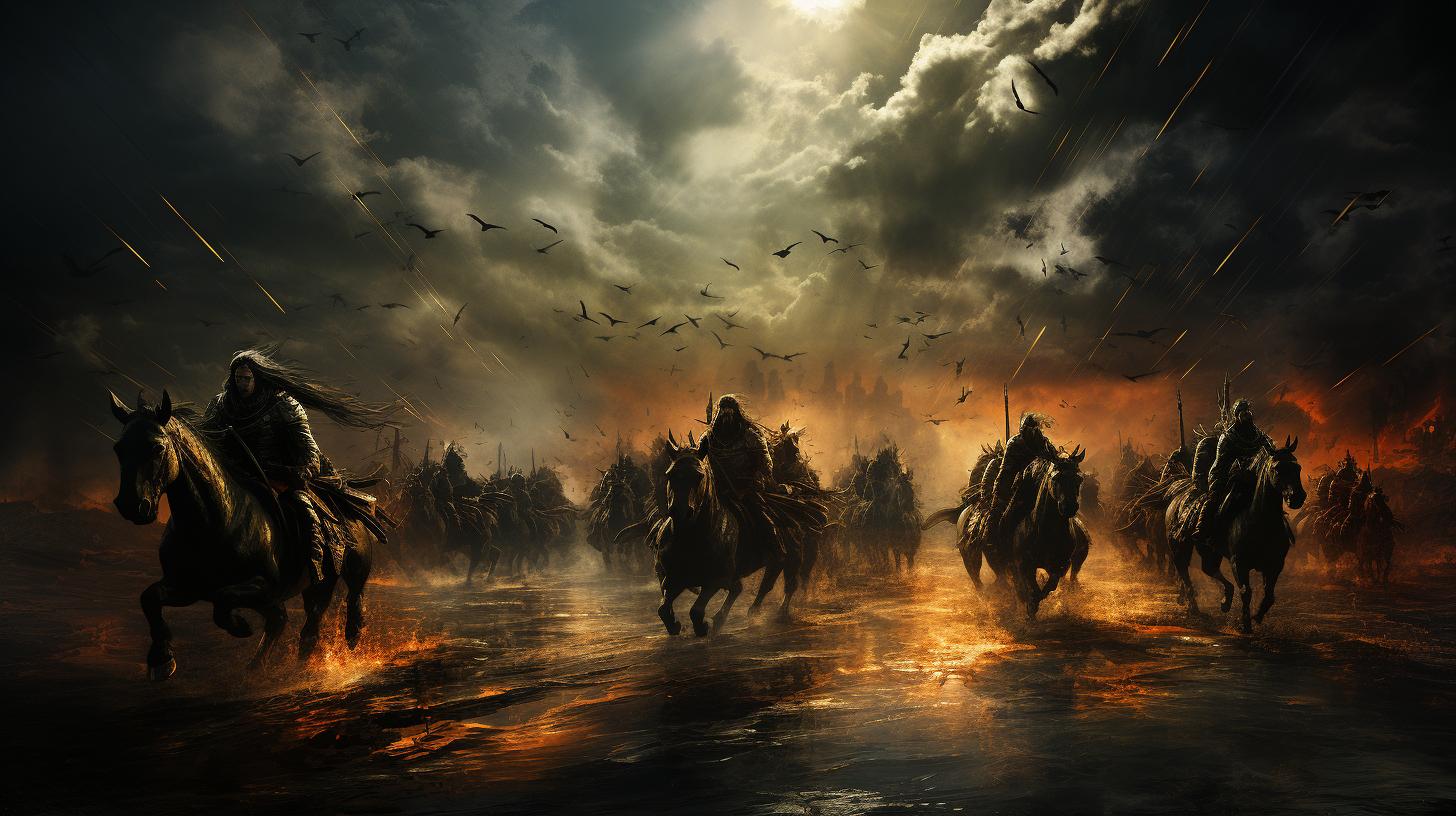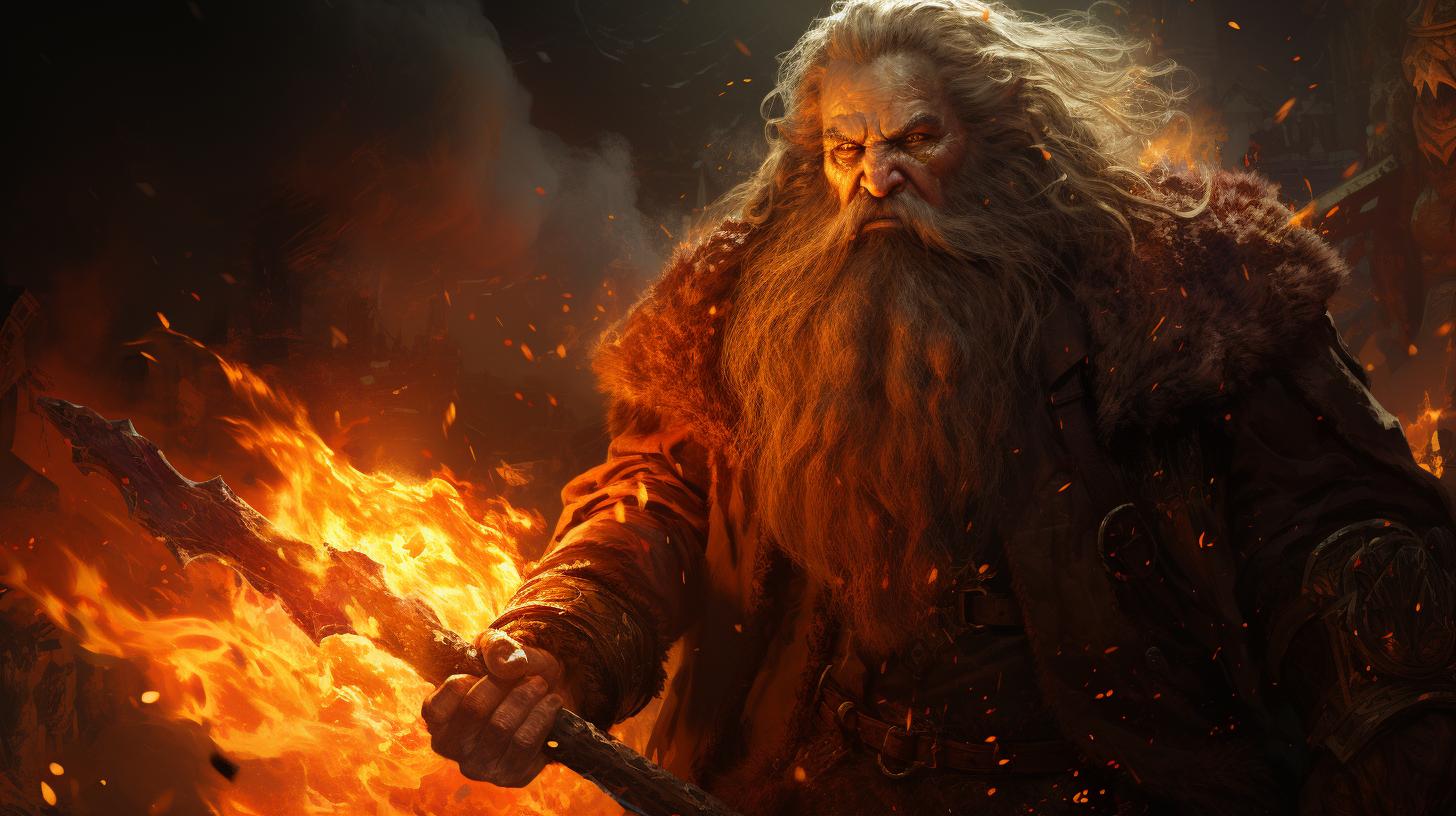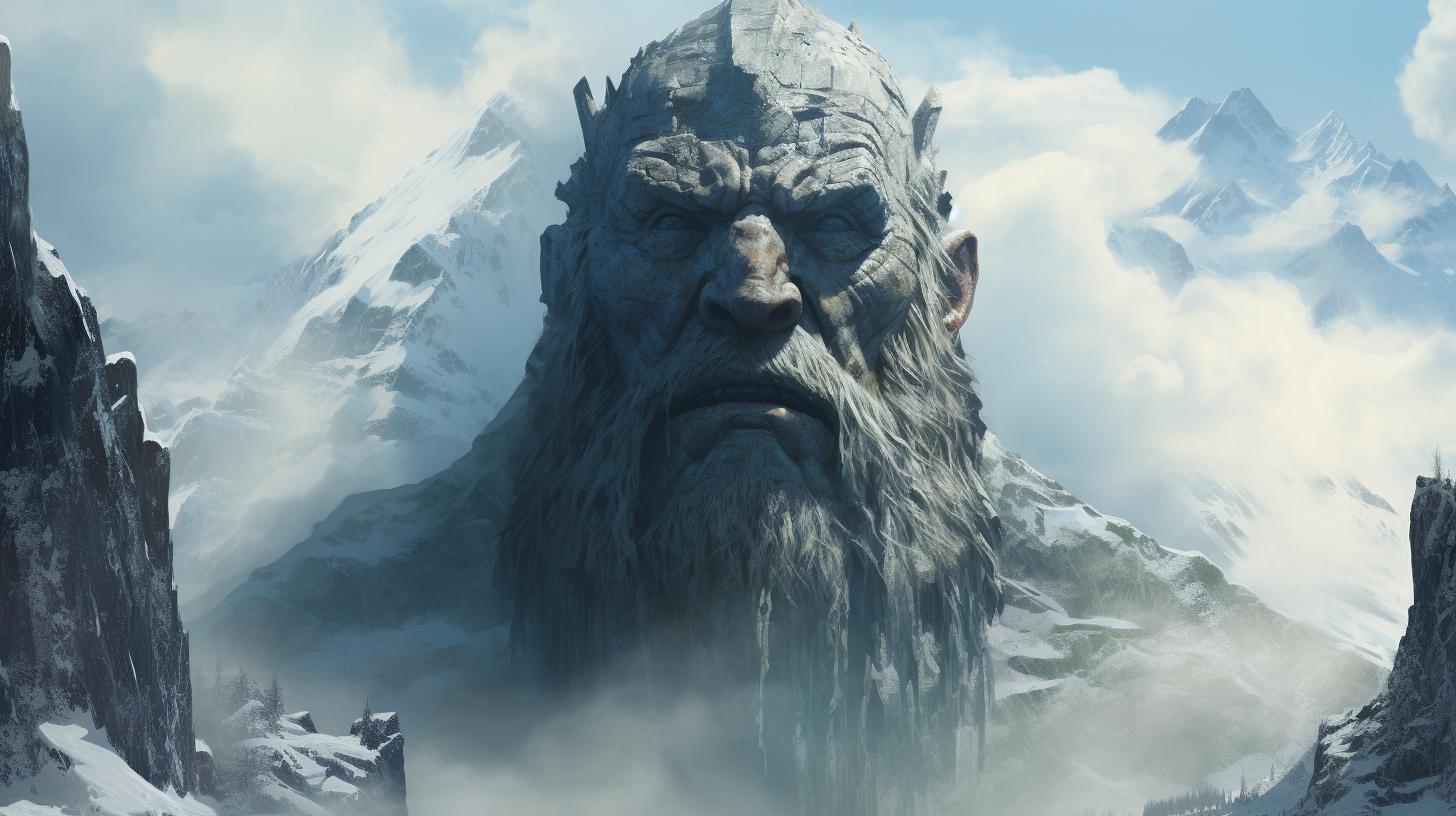‘Skoll and Hati: A Dive into Norse Mythology’s Giant Wolves’
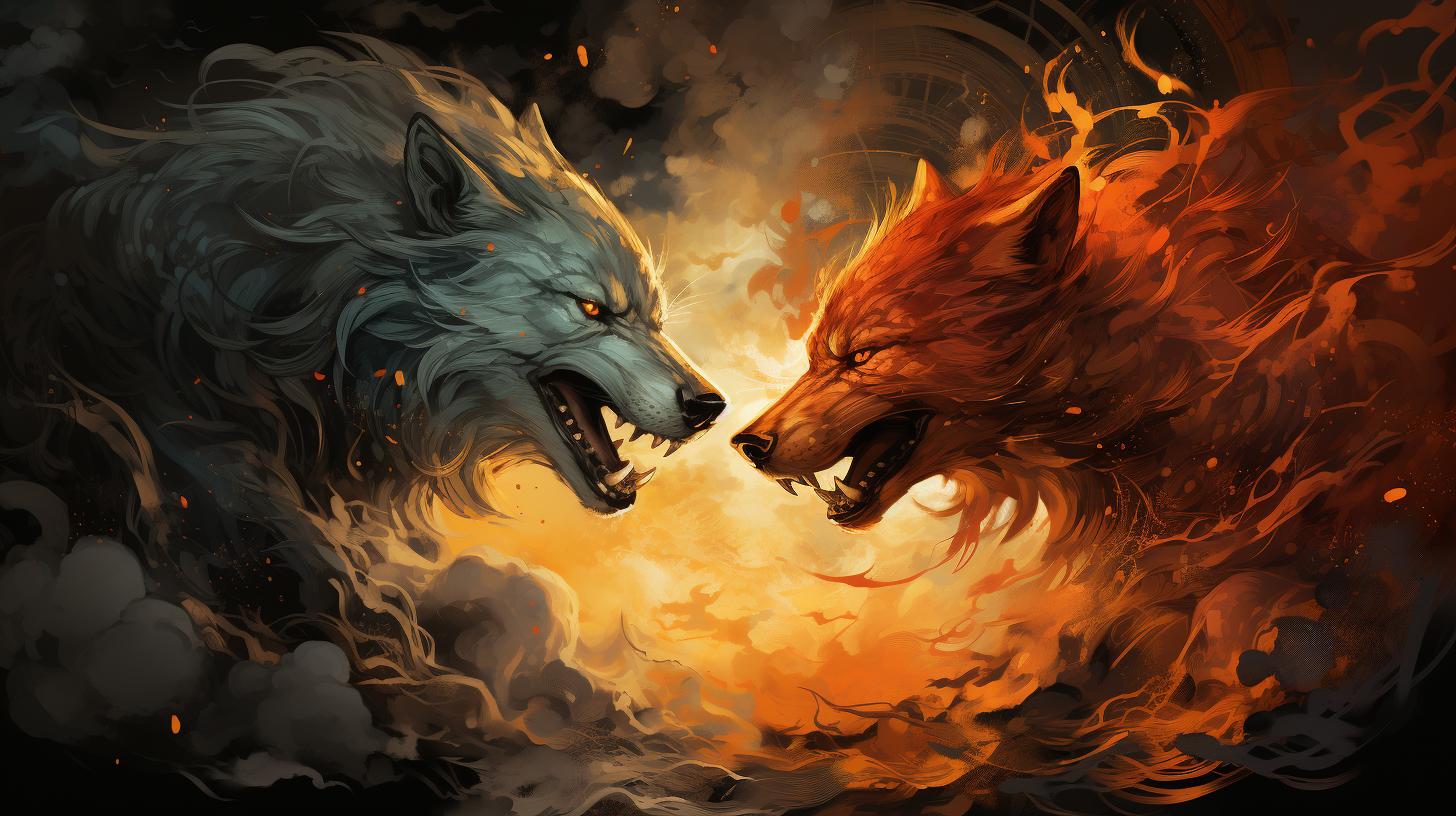
Sköll and Hati, prominent wolves in Norse mythology, are known for their relentless pursuit of the sun and moon. They play significant roles in Norse cosmology, with their chase symbolizing the impending end of the world.
Sköll is associated with the sun, while Hati pursues the moon. These giant wolves are believed to be children of Fenrir, and their connection to solar eclipses is widely discussed.
However, interpretations and contradictions within the sources reflect the complex and varied nature of Norse mythology. This article delves into their origin, gender association, and the intriguing legends surrounding their pursuit.
Sköll Pronunciation
In Norse mythology, Sköll is pronounced as “skohl.” The “ö” is pronounced like the “u” in “burden” or “hurt.” The double “l” indicates a prolonged sound, similar to the “l” in “call.”
Together, the pronunciation emphasizes a strong and resonant “skohl” sound.
Background of Sköll and Hati in Norse Mythology
Sköll and Hati hold significant roles in Norse mythology, where they are portrayed as powerful giant wolves. This section delves into their origin, mythological significance, and their intriguing connection to solar eclipses in the Norse legend.
Origin and Mythological Significance
According to Norse mythology, Sköll and Hati are believed to be offspring of Fenrir, the fearsome wolf god associated with chaos and destruction. The mother of Sköll and Hati is thought to be Angrboda, another prominent figure in Norse mythology.
Their origin story contributes to their mythological significance. Sköll, the wolf pursuing the sun, and Hati, the wolf chasing the moon, symbolize the eternal cycle of day and night.
Their never-ending pursuit represents the struggle between light and darkness, aligning with the cosmic battles and apocalyptic prophecies of Ragnarok.
Connection to Solar Eclipses in Norse Legend
The Norse legends intertwine Sköll and Hati with the occurrence of solar eclipses. It is believed that during these celestial events, Hati attempts to devour the sun, causing temporary darkness.
The Vikings, associating this event with Hati’s pursuit of the sun, engaged in various practices to ward off Hati’s influence and protect the sun from being devoured.
The association of Sköll and Hati with solar eclipses demonstrates the interplay between celestial phenomena and mythological narratives in Norse culture. These extraordinary events captured the imagination of the ancient Norse people, connecting their beliefs to the natural world around them.
Why Do Sköll and Hati Chase the Sun and Moon?
In Norse mythology, the relentless pursuit of Sköll and Hati after the sun and moon raises the question of their motive. Their ceaseless chase across the sky carries a deeper significance embedded in the mythological narrative.
One interpretation suggests that Sköll and Hati’s pursuit is an embodiment of chaos and destruction orchestrated by the forces of darkness. The sun and moon, representing order and natural cycles, are symbols of cosmic harmony.
By relentlessly chasing them, Sköll and Hati disrupt this balance, signaling the inevitable and cataclysmic end of the world during Ragnarok.
Another perspective posits that the wolves’ pursuit symbolizes an eternal struggle between light and darkness.
Sköll’s relentless pursuit of the sun signifies the constant battle against daylight, while Hati’s chase after the moon represents the perpetual struggle against nighttime and the shadows it brings.
Moreover, their pursuit may reflect the cyclic nature of life and death.
As Sköll and Hati chase the celestial bodies, it represents a metaphorical journey that reflects the passage of time, the cycle of day and night, and the eventual culmination of life’s inevitable end.
Ultimately, the reason behind Sköll and Hati’s chase of the sun and moon in Norse mythology is multifaceted, encompassing themes of chaos, cosmic balance, eternal struggle, and the inexorable passage of time.
The complexity of their motive adds depth and symbolism to the mythological narrative, making them integral figures in Norse mythology.
Gender Association of Sköll and Hati
In Norse mythology, the gender association of Sköll and Hati provides intriguing insights into their roles and symbolism. According to a stanza in the poem Grímnismál, Sköll is described as relentlessly pursuing a ‘bright priest,’ indicating a male association with the sun.
On the other hand, Hati is portrayed as chasing a ‘bright bride of the sky,’ suggesting a female association with the moon.
This gendered distinction reflects the duality and balance often found in Norse mythology, where the sun represents masculine power and energy, while the moon symbolizes feminine mystery and intuition.
Sköll’s pursuit of the sun and Hati’s pursuit of the moon highlight their respective connections to these celestial bodies and their associated genders.
It is fascinating to note that these gender associations are not explicitly mentioned in all sources, and there are variations and contradictions within Norse mythology itself.
This ambiguity adds to the nuanced nature of Sköll and Hati’s roles, leaving room for interpretation and multiple layers of symbolism.
Meaning behind Sköll and Hati’s Pursuit
The relentless pursuit of Sköll and Hati, the giant wolves of Norse mythology, holds deep symbolic significance in the ancient tales. Their eternal chase of the sun and moon represents more than a mere hunt.
It reflects the ongoing cycle of day and night, light and darkness, and the balance of cosmic forces.
In Norse cosmology, the sun (sometimes referred to as a “bright priest”) and the moon (often called a “bright bride of the sky”) are vital celestial bodies.
Their constant movement across the sky serves as a metaphor for the passage of time and the rhythm of life itself. Sköll’s tireless pursuit of the sun, and Hati’s relentless chase of the moon, emphasize the inevitable nature of these celestial events.
This cosmic chase also symbolizes the eventual end of the world, as foretold in the apocalyptic event of Ragnarok. The final fulfillment of Sköll and Hati’s pursuit, when they finally catch their prey and devour the sun and moon, marks the dramatic climax of the Norse mythological narrative.
It represents the cataclysmic transformation and rebirth that accompany the end of one age and the beginning of another.
Furthermore, the symbolic gender associations attached to Sköll and Hati deepen the meaning behind their pursuit.
As Sköll relentlessly chases the sun, traditionally associated with a male deity, it evokes masculine traits such as strength, power, and the pursuit of knowledge and enlightenment. Hati’s pursuit of the moon, often depicted as feminine, embodies qualities like mystery, intuition, and the nurturing essence of the night.
The profound symbolism embedded in Sköll and Hati’s pursuit transcends the dimensional scope of folklore. It serves as a reminder of the cyclical nature of existence, the inevitability of change, and the constant striving for balance and harmony.
These mythical wolves embody cosmic forces and embody the mythological forces that shape the world, infusing Norse mythology with depth, complexity, and a timeless reflection of the human experience.
Sköll and Hati: Interpretations and Contradictions
Sköll and Hati, the renowned wolves in Norse mythology, have intrigued scholars and enthusiasts alike with their enigmatic roles and origins.
Exploring the medieval Icelandic sources, we encounter diverse accounts and interpretations surrounding these mythical creatures.
Different Accounts in Medieval Icelandic Sources
Medieval Icelandic sources, such as the writings of Snorri Sturluson, present conflicting narratives regarding Sköll and Hati’s pursuits. While Sturluson describes Sköll as the wolf chasing the sun and Hati as the one pursuing the moon, the poem Grímnismál offers an alternative perspective.
In this stanza, Sköll relentlessly chases a ‘bright priest’ (the sun), while Hati pursues a ‘bright bride of the sky’ (the moon), suggesting a reversal of their traditional roles.
Lack of Systematization in Norse Religion
The contradictory accounts of Sköll and Hati’s roles exemplify the lack of systematization in Norse religion during its living tradition.
Norse mythology and religious practices were not codified, leading to variations and differing interpretations among different regions and individuals. This lack of uniformity further contributes to the complexity and diversity within Norse mythological traditions.
The sources provide glimpses into the interpretation of Sköll and Hati’s pursuits, but due to the absence of a definitive religious text, it is challenging to establish a consensus on their true nature and significance.
Overall, the interpretations and contradictions surrounding Sköll and Hati’s roles in Norse mythology highlight the fluidity and diversity of Norse religious traditions. The sources’ inconsistencies contribute to the intricate tapestry of Norse mythology, urging us to approach these mythical creatures with curiosity and open-mindedness.
FAQs about Sköll and Hati Norse Mythology
What are Sköll and Hati’s roles in Norse mythology?
Sköll and Hati play significant roles in Norse mythology. Sköll relentlessly pursues the sun, symbolizing its inevitable demise during Ragnarok, the apocalyptic event. Hati, on the other hand, seeks to chase and devour the moon, representing the celestial balance disturbed by their relentless pursuit.
Are Sköll and Hati children of Fenrir?
Yes, according to Norse mythology, Sköll and Hati are believed to be the offspring of the monstrous wolf Fenrir. Their mother is Angrboda, a giantess and the mother of various mythological creatures.
This connection establishes the familial relationship between Sköll, Hati, and Fenrir.
What is the relationship between Sköll and Hróðvitnir?
In Norse mythology, Hróðvitnir is mentioned as the father of Hati in the poem Grímnismál. As Hati and Sköll are frequently depicted together and share a common goal of chasing celestial bodies, it is likely that Hróðvitnir is also the father of Sköll, linking them as siblings.
How are Sköll and Hati associated with solar eclipses?
In Norse legend, Sköll and Hati are closely associated with solar eclipses. Hati’s relentless pursuit of the moon mirrors the occurrence of lunar eclipses, while Sköll’s chase of the sun aligns with solar eclipses.
These cosmic events were believed to be the result of the wolves’ attempts to devour the celestial bodies.
Did the Vikings believe in warding off Hati during eclipses?
Yes, it is believed that the Vikings took measures to ward off Hati and prevent him from swallowing the sun during solar eclipses. They would make loud noises, beat drums, and engage in other activities to create a commotion and scare off the wolf, ensuring the safe passage of the sun and averting any potential catastrophe.
Summary and Insights on Sköll and Hati
Sköll and Hati, the prominent wolves of Norse mythology, hold significant roles as relentless pursuers of the sun and moon. Their origin and mythological significance delve into the complex tapestry of Norse cosmology.
These immense wolves, believed to be offspring of Fenrir, are associated with solar eclipses and cosmic events.
The gender association between Sköll and Hati unveils intriguing symbolism within their pursuit.
Sköll, relentlessly chasing the sun, embodies a fierce masculinity, while Hati, in pursuit of the moon, represents a feminine element. This duality adds depth and complexity to their mythological tales.
The purpose behind Sköll and Hati’s pursuit is rooted in the impending doom of Ragnarok, the apocalyptic event leading to the end of the world.
Their continuous chase marks the countdown to this cataclysmic event, where they are destined to capture and devour their celestial prey.
Interpretations and contradictions surrounding Sköll and Hati’s existence reflect the lack of systematization in Norse religion and mythology during its living tradition.
Medieval Icelandic sources offer varying accounts, leaving room for different understandings and interpretations.
Different Accounts in Medieval Icelandic Sources
- Snorri Sturluson claims Sköll chases the sun, while Hati pursues the moon. However, a stanza in the poem Grímnismál presents an alternate interpretation, suggesting Sköll relentlessly pursues a ‘bright priest’ (the sun), while Hati chases a ‘bright bride of the sky’ (the moon).
- The nearly identical epithet Hróðrsvitnir used to describe Fenrir in the poem Lokasenna further hints at his likely connection as the father of Sköll and Hati.
- While the sources themselves offer contrasting accounts, attempting to propose a definitive genealogical relationship between Fenrir, Sköll, and Hati proves futile.
In Norse legend, Sköll and Hati are associated with solar eclipses.
Hati’s role involves attempting to devour the sun during these celestial events. Vikings believed in warding off Hati by creating loud noises, possibly to prevent him from swallowing the sun and plunging the world into darkness.
Overall, the enthralling tales of Sköll and Hati, their pursuit of the sun and moon, and their ambiguous parentage contribute to the rich and enigmatic tapestry of Norse mythology. Their symbolism, gender associations, and connections to cosmic phenomena continue to captivate and inspire exploration of this ancient Nordic lore.
.

